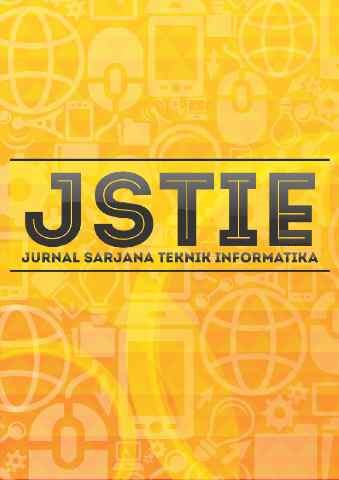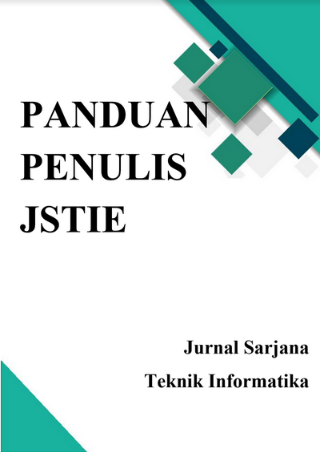Rancang Bangun Penjualan Tiket Online Lokawisata Baturraden Berbasis Website
DOI:
https://doi.org/10.12928/jstie.v8i3.17778Keywords:
PHP, MySQL, E-Ticketing, Tiket Online, Tiket Online WisataAbstract
Di Jaman teknologi komputerisasi sekarang ini, dengan semakin banyaknya masyarakat pengguna komputer yang memanfaatkan berbagai aplikasi untuk memudahkan aktivitas masyarakat untuk memenuhi kebutuhan mereka sehari-hari, mereka cenderung memillih sesuatu yang instan, aman dan efisien tidak terkecuali dalam hal jual-beli. Tidak hanya dalam membeli barang, tetapi ketika hendak berpergian & malas untuk antri pembelian tiket, sekarang sangatlah mudah karena adanya website penjualan tiket wisata secara online. Seperti pada website penjualan tiket online lokawisata baturraden ini sangat mempermudah bagi pengunjung lokawisata untuk membeli tiketnya tanpa mengantri di tempat wisata tersebut. Mengacu pada penjualan tiket online tersebut maka untuk membantu tercapainya target penjualan di website tiket online lokawisata tersebut, maka penulis merancang dan membangun sebuah sistem informasi website tiket online lokawisata baturraden berbasis website dengan bahasa pemrograman PHP yang dibuat pada komputer dengan sistem operasi Windows dengan menggunakan aplikasi editor â€Notepad++â€. Alasan memakai Notepad++ karena aplikasi ini dapat didownload secara gratis dan memiliki aturan-aturan yang mudah dipahami.References
A. Aminudin, “Cara Efektif Belajar Framework Laravel.†Lokomedia, 2015.
K. M. W. M. Wibowo, I. Kanedi, and J. Jumadi, “Sistem informasi geografis (sig) menentukan lokasi pertambangan batu bara di provinsi bengkulu berbasis website,†J. Media Infotama, vol. 11, no. 1, 2015.
B. Febriadi and A. Zamsuri, “RDBMS Applications as Online Based Data Archive: A Case of Harbour Medical Center in Pekanbaru,†in IOP Conf. Ser. Earth Environ. Sci, 2017, vol. 97, no. 1, pp. 1–5.
G. Ng-Kruelle, P. A. Swatman, J. F. Hampe, and D. S. Rebne, “Biometrics and e-identity (e-passport) in the European Union: end-user perspectives on the adoption of a controversial innovation,†J. Theor. Appl. Electron. Commer. Res., vol. 1, no. 2, pp. 12–35, 2006.
B. Nicholas, “Electronic Ticketing: Electronic Business Course,†Fribourg, Proj. Pap., 2008.
S. Sugiyono, “Metode penelitian pendidikan pendekatan kuantitatif, dan R&D,†Alf. Bandung, 2015.
R. S. Pressman, “Software Engineering-A Practitionerʼs Approach.†McGraw-Hill, 2010.
Downloads
Published
Issue
Section
License
License and Copyright Agreement
In submitting the manuscript to the journal, the authors certify that:
- They are authorized by their co-authors to enter into these arrangements.
- The work described has not been formally published before, except in the form of an abstract or as part of a published lecture, review, thesis, or overlay journal. Please also carefully read Journal Posting Your Article Policy.
- The work is not under consideration for publication elsewhere.
- The work has been approved by all the author(s) and by the responsible authorities – tacitly or explicitly – of the institutes where the work has been carried out.
- They secure the right to reproduce any material that has already been published or copyrighted elsewhere.
- They agree to the following license and copyright agreement.
Copyright
Authors who publish with Jurnal Sarjana Teknik Informatika agree to the following terms:
- Authors retain copyright and grant the journal right of first publication with the work simultaneously licensed under a Creative Commons Attribution License (CC BY-SA 4.0) that allows others to share the work with an acknowledgement of the work's authorship and initial publication in this journal.
- Authors are able to enter into separate, additional contractual arrangements for the non-exclusive distribution of the journal's published version of the work (e.g., post it to an institutional repository or publish it in a book), with an acknowledgement of its initial publication in this journal.
- Authors are permitted and encouraged to post their work online (e.g., in institutional repositories or on their website) prior to and during the submission process, as it can lead to productive exchanges, as well as earlier and greater citation of published work.








